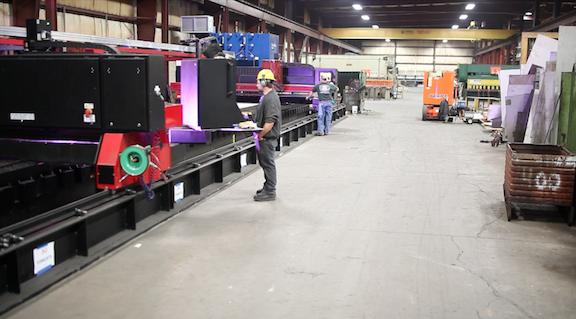Home /
Stainless Steel Plate 321 321H ASTM A240
321 and 321H Stainless Steel Plate Overview

321 and 321H stainless steel plate are basic austenitic materials. These grades are stabilized by the addition of Titanium. These grades are often utilized for applications in temperatures up to 1,650 ℉. These grades of plate combine high strength, resistance to scaling, and phase stability, with resistance to subsequent aqueous corrosion. 304L plate is more readily available in most product forms, and so is generally used in preference to 321 or 321H if the requirement is simply for resistance to intergranular corrosion after welding. However, 304L has lower heat strength than 321 and 321H plate and so may not be the best choice if the requirement is resistance to an operating environment over about 932 ℉.
Penn Stainless Products stocks these grades of stainless steel plate in plate mill plate. These plate grades are typically available for purchase in sizes between 0.188” to 2.0”. Other thicknesses are available as well; consult with a member of the Penn Stainless team. It is also available for purchase in a variety of lengths and widths.
Chemical Composition of 321 and 321H Stainless Steel Plate
The difference between 321 and 321H grades lies in the amount of carbon contained within each metal. 321 has at most 0.08% while 321H contains between 0.04% and 0.10% carbon. They both contain at most 2.0% manganese, 0.75% silicon and 0.045% phosphorous. This grade is also made up of at most 0.03% sulfur, between 17.0% and 19.0% chromium, and at most 0.10% nitrogen. The addition of titanium is what gives 321 and 321H stainless steel plate its unique properties. It can also include up to 0.70% titanium.
Mechanical Properties of 321 and 321H Stainless Steel Plate
Both grades have a tensile strength of 75 ksi and a yield strength at 0.2% of 30 ksi. They both have an elongation of 40% as well. On the Brinell hardness scale they both have a hardness of 217 and on the Rockwell B scale both 321 and 321H stainless steel have a hardness of 95.
Physical Properties
This stainless steel has a density of 0.289 Ibm/in^3 and the elastic modulus is 193 Gpa. The mean coefficient of thermal expansion between 32℉ and 212℉ is 9.22in x10-6, between 32 and 599 the coefficient of thermal expansion is 9.56in X10^-6. The coefficient of thermal expansion of 321 plate between 32℉ and 1,000℉ is 1.03in x10^-5. The specific heat of 321 stainless steel plate is 0.194 BTU/IBM.
Specifications
| 321 | 321H |
|---|---|
| UNS S32100 | UNS S32109 |
| ASTM A240 | ASTM A240 |
| ASTM A480 | ASTM A480 |
| ASME 240 | ASME 240 |
Applications and Usage
There are many uses for these grades of stainless steel plate, especially in environments which require higher temperatures. These grades of stainless steel plate are commonly used in heat exchangers, bellows, expansion joints, heating element tubing, spiral welded tubes for burner pipes and flues, as well as furnace parts. This grade of stainless steel plate also has applications in woven or welded metal screens for use in high temperature mineral processing. It also has applications in the aerospace industry, specifically in aircraft exhaust and piston engine manifolds. These grades are useful in chemical and food processing industries, specifically in equipment and storage. Petroleum refining, and the chemical industry and in waste treatment processes, are also good applications for these grades. They are more commonly used in Europe than in North America.
Processing and Fabrication Options
- Plasma cutting
- Plate saw cutting
- Shearing
- Laser cutting
- Waterjet cutting
- Forming
- Welding
- Machining
- Plate leveling